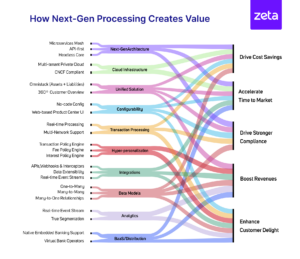Abstract
There are strong recommendations for IBM i applications to be modernized or migrated to a futuristic platform and there is strong hesitation too which drives the anti-migration sentiment. This leads us to the question; do we need to invest in the skillset
of the existing platform or not?
Overview
IBM i being the legacy system, it is targeted for migration by many enterprises owing to various reasons. Here in this blog, we will explore available options for migration in today’s scenario, likelihood of their adoption, the reason for not fast tracking
the migration or exit and the need for uplifting the development workforce.
IBM i (widely known as AS/400) has been one of the most strategic systems for many of the mid to large enterprises including Banking, Financial Services and Insurance (BFSI). It is in use by all these enterprises for more than 25 to 30 years. It hosts core
applications for Banks and Insurers including Core Banking, Card Management, Policy Administration etc. IBM i, as we discuss here, is the entire ecosystem that comes along with IBM i, the hardware, the operating system, the programming languages like RPG,
COBOL and CL, database DB2 for i, IBM MQ for messaging, job management, user access, security etc. Legacy Modernization is in discussion within banks for many years now and IBM i is also in the radar for replacement by new technologies because of the challenges
related to IBM i platform specific skillset (RPG, COBOL), monolith architecture of applications leading to agility issues, interoperability with other platforms and DevOps tools, not aligned to strategic investments, missing most of the cloud benefits (e.g.,
on-demand capacity) etc. At the same time, there are number of reasons why migration is being postponed. Some of them are, new hardware releases, OS releases, extended support window, the current investments on heavy infrastructure, migration risk and cost.
Here, we try to gauge the early possibilities of its exit so that the dependency on its SMEs shall be predicted.
Our perspective
Over the period, the business has grown, business requirements have grown, various risks have grown, compliance and regulatory requirements have grown and eventually all these have been captured and taken care within one single monolith application for each
enterprise. And hence the high level of complexity having the concentration of all the knowledge, the business rules, the business processes. Added to this all the technical implementations like multi-threading, messaging, job scheduling, job control etc.,
are also part of the monolith implementation.
With the advent of Cloud, DevOps and Agile practices, industries and enterprises including bankers and insurers are looking for transformation of IBM i applications as well to reap the latest features and benefits. Enterprises are having multiple options
in-front of them. This platform can follow agile practices and be part of DevOps world with ARCAD solutions. One of the large UK banks has adopted DevOps on IBM i successfully. The recently launched IBM i Merlin Platform (Modernization Engine for Lifecycle
Integration) helps this with integrated IDE, CI/CD Merlin tools for DevOps experience along with IBM i virtual machine provisioning, REST APIs management etc., and brings hope for complete DevOps eco system in the future. Recent developments help in agility
of IBM i environments and re-hosting its applications. The system administration of this platform shall be offloaded by migrating infrastructure directly to IBM Cloud or to Skytap on Azure and IBM Cloud or to Connectria on AWS. Infinite i is in rescue to re-host
the applications on Azure or AWS or Google Cloud. All these options shall be categorized as either in-place modernization or pseudo-modernization and have dependency on IBM i skillset.
Tool sets from Fresche, Google (G4) provide one to one conversion (refactor) of IBM i native source codes and opens the gateway for deployment of the application on open systems and cloud. But the preference for this option is fading considering the maintainability
and futuristic view for large enterprises like banks. Banks and more specifically Insurers have very dynamic business needs like ever increasing regulatory and compliance demands and hence the need for highly maintainable code base.
Leaving the in-place modernization (last resort) and refactor, the other options can be largely grouped into one of the two options namely, COTS replacement or rewriting the entire application. These options have their own pros and cons. For most of the
mid and large sized banks and banks with multi-country or multi-geography operations, the core applications are their treasure, their strength, and the enabler for what they are. So, COTS adoption rate will be limited because of the exact fitment of COTS application
for the bank’s rich capabilities such as cards processing, loyalty, and rewards management.
Now, the banks are left with the other option which is rewrite. As everyone knows, rewriting the existing application (functionally equivalent but architecturally current) into a target landscape is almost like building a new application. Reverse engineering
tools from Fresche and ARCAD help speeding up with the rules extraction. The new way of development powered with Agile, DevOps, Test Automation etc., the rewrite may not take too long but it will not be short as well. Some of the large banks tried rewrite
and experimenting. Many banks are showing interest in rewriting but looking for a cost effective, robust and risk free or reduced risk migrations which is still far off.
Apart from the expected timeline for rewrite, the factors like strategic decision on target landscape, target technologies, target architecture, the regulatory and compliance challenges, organizational changes to adopt the transformational activities, the
current investment on heavy infrastructures etc., are going to impact the overall IBM i migration timeline for most of the Banks.
IBM is also continually investing and upgrading the Power servers (Power10 based servers launched in 2021) and IBM i (7.5 released in May 2022) on regular basis along with support for open technologies as well to keep the momentum on retaining this platform.
The support window (in general 7+3 years – Normal + Extended) and the re-usability of Power servers for other environments (AIX) are some of the important factors giving additional space for decision making (no rush to exit the platform).
Conclusion
With all these factors, the need for running the IBM i applications continue to stay high for many more years. It means, these applications should be supported, maintained, and enhanced till the enterprises find an effective viable alternate. But at the
same time, it is getting more and more difficult to engage the workforce on IBM i skill set. It is time to uplift the development workforce by leveraging the enhanced IDEs and tools for this platform.
- ant financial
- blockchain
- blockchain conference fintech
- chime fintech
- coinbase
- coingenius
- crypto conference fintech
- fintech
- fintech app
- fintech innovation
- Fintextra
- OpenSea
- PayPal
- paytech
- payway
- plato
- plato ai
- Plato Data Intelligence
- PlatoData
- platogaming
- razorpay
- Revolut
- Ripple
- square fintech
- stripe
- tencent fintech
- xero
- zephyrnet













